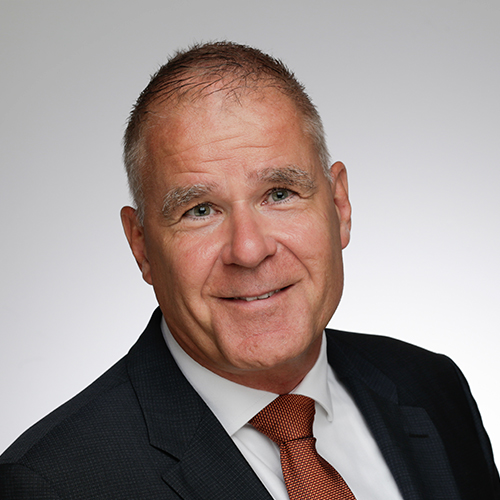Learning Platform - "Markets & Trading"
Course: Swaps & Swaps Trading
About the Course
The programmes “Swaps & Swaps Trading” (all levels) are specifically designed to expand delegates’ knowledge of, and skills with respect to swaps, their features, how to use these instruments, why and when to use them, and how they can be of help when risk exposures are to be managed. The pricing and valuation of swaps is also incorporated, and therefore the aim will also be at (potential) price changes. Last but not least, these programmes offer insight in the opportunities and risks of these instruments and the incorporation of swaps in energy portfolios.
Objectives
In the first level of the “Swaps & Swaps Trading” programmes focus is on the fundamentals of swap contracts. This is explained by focusing on interest rate swaps. Interest rate swaps are used by energy companies to manage cash flows and interest payments on working/economic capital. Interest rate swaps are the most popular type of swaps by far, and they also represent the first swap contract ever concluded.
In this programme contracts specifications are taken into consideration and settlement procedures are explained. This programme will therefore equip delegates with a working knowledge of how to trade swaps.
Course Contents
Treasury management
- About funding and financing, including cash flow management.
- Concerning asset & liability management (ALM).
Fundamentals of swap contracts – Application of swaps
- Swap agreements in a nutshell, incl. the definition & concept.
- About derivatives in general, and swaps in particular.
- Reduction of finance cost or mitigate interest rate exposure.
Swap contract specifications – Settlement of swaps
- About the legs, notional amount, reference rate, maturity, coupon frequency.
- Covering settlement of interest rate swaps.
- Differences between IRS and commodity swaps.
Interest rates, exposures & forward rate agreements (FRAs)
- Learn about interest rate market conventions.
- Master knowledge about forward rate agreements.
Types of swaps – Pricing of the legs
- About fixed-for-fixed, floating-for-floating, fixed-for-floating.
- Covering indices and references, incl. EONIA, LIBOR & EURIBOR.
- Including the settlement price calculation procedure.
Valuation of interest rate swaps (IRS) – Part 1
- About the value of swaps at the conclusion of a deal.
- Concerning the value of swaps during their lifetime.
Valuation of interest rate swaps (IRS) – Part 2
- About overnight indexed swap (OIS).
- Concerning the clean & dirty value of swaps.
Trading of swaps
- About the role of broker-dealers in the OTC market.
- Concerning the role of (investment) banks.
- The consequence of trading on own account.
- Market liquidity for swaps.
Exam & Certification
Objectives
In the second level of the “Swaps & Swaps Trading” programmes focus is on energy swaps, with underlying value oil, gas, coal, power, and/or emission rights. In this programme attention is given to the pay-off structure of cash settled swaps, and also to the physical unwinding of contracts with physical delivery. Students are explained how energy swaps are used as financial instruments with the purpose of hedging exposures, exchanging physical positions and fulfilling financial desires and physical obligations.
Course Contents
Fundamentals of energy swaps – Oil, gas, coal, power & carbon
- The basics of energy swaps, including settlement types.
- Mastering energy swaps terminology.
Physical energy swaps
- Learn about so-called location swaps.
- Master the fundamentals of basis swaps.
Financial energy swaps
- About cash settlement, reference prices and indexation.
- Covering fixed-for-floating swaps.
Cross-commodity swaps
- Covering differential swaps, margin swaps, double-up swaps.
- About hedging of an oil refinery, power plant or other asset.
Swaps for consumers
- About on average swaps.
- Concerning capped swaps.
Swaps for producers
- About participation swaps and range out swaps.
- Concerning floored swaps.
Single payment swaps & prepaid swaps
- Concerning various other types of energy swaps.
- Including explanation of these swaps work and can be applied.
Energy swaps in depth
- Covering the valuation of energy swaps.
- Including the reasons to enter into an energy swap.
Exam & Certification
Objectives
In the third level of the “Swaps & Swaps Trading” programmes focus is on risk management and optimisation of the currency portfolio. This programme goes beyond energy swaps, and focuses on FX swaps. Energy trading organisations execute transactions in US dollars (oil and coal), pound sterling (UK gas), euros (continental power) and other currencies. They report however (p.e. in their annual reports) in one single currency. And since currency exchanges rate fluctuate over time these organisations are exposed to currency risk. The application of FX transactions (such as FX forwards and FX swaps) is covered in an intensive way and helps students to become masters of swaps.
Course Contents
Fundamentals of FX markets
- About currency markets & currency rates
- Mastering factors that impact currency rates
Quotation of FX rates
- About ISO/SWIFT codes
- Concerning country codes, base currency & variable currency
Currency pairs & cross-rates
- Learn about direct and indirect quoted rates
- Master expertise regarding currency combinations & double crossings
FX forwards
- Covering forward FX markets
- Including forward foreign exchange transactions
FX swaps – Fundamentals
- About forward/forward, today/tom and tom/next
- Concerning forward-forward
- Covering swap points
- Including terminology, such as cash leg and term leg
FX swaps – Hedging, regulating & rolling
- About managing cross-currency cash positions
- Concerning hedging with FX swaps
- Including the regulation of liquidity positions
- Covering the rolling of FX forward positions with FX swaps
FX swaps – More details
- Concerning opening & closing positions
- About cross-currency interest rate swaps
- About valuation and financial results
Exam & Certification
Objectives
In the fourth level of the “Swaps & Swaps Trading” programmes focus is on the application of swaptions in general and credit default swaps (CDS) specifically. Students are also explained how these instruments can be of help in order to mitigate credit risk. The working and application of credit default swaps is explained, and attention is provided to how these instruments can be allocated. This programme covers the role of CDS is the credit crisis and provides insight in the risks related to them.
In this level also swaptions are incorporated. These ‘derivatives on derivatives’ are actually combinations of two financial instruments that are already complex as stand alones. Now they are even combined and that makes valuation and understanding them even more complex. Energy companies however make use of these instruments and therefore professionals must master expertise in this field.
Course Contents
Swaptions – Fundamentals
- The basics of swaptions, including contract specifications
- Mastering swaption-related terminology
- Compound derivative: Payers swaption and receivers swaption
Swaptions – Essentials
- About swaption styles and extendables
- Concerning fixed tenor and/or fixed end-date
Swaptions – Energy swaptions (oil-indexed gas contracts)
- Learn about the application of swaptions, to manage exposures
- Including an example concerning a utility’s gas portoflio
Swaptions – Valuation
- Covering the Black model and one-factor-no-arbitrage models
- Concerning the lattice-based approach and trees
Credit default swaps – Fundamentals
- About credit risk and credit risk management
- Covering defaults, auctions and credit insurance tools
- Including the contract specifications and relevant details
Credit default swaps – In-depth
- About reference entities/obligators
- Concerning jump risk and systemic risk, including regulation
Credit default swaps – Credit events
- About credit rating agencies, their role and regulation
- Concerning physical delivery and cash settlement
Credit default swaps – Valuation
- Covering the spread or premium and credit spread rates
- Including the probability model, recovery rate & credit curve












